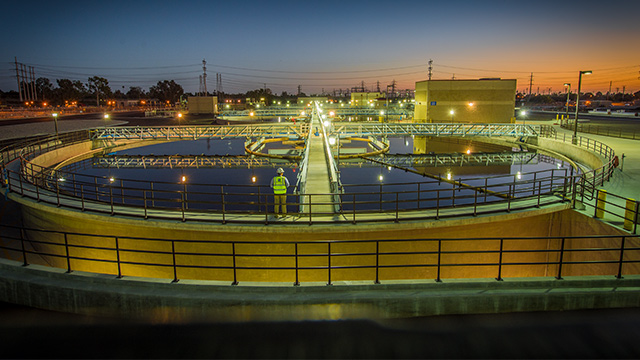Public-private partnerships (PPPs) are a bit like snowflakes – no two are alike. In fact, for municipalities looking at alternative forms of funding for capital projects, there are a multitude of options that can make any arrangement a custom fit for the particular situation.
“There are many PPP models that can be used to create the right type of partnership between a public entity and the private sector,” said Bruce Allender, Chief Operating Officer at infraManagement Group (iMG), a wholly owned subsidiary of Black & Veatch that focuses on PPPs for energy, water and wastewater utilities. “It is this range of flexibility and the ability to provide funding that can make PPPs very appealing.”
It is important to understand the various types of PPP arrangements, and how each can provide a benefit to the public entity while offering a better level of service to their customers.
For instance, a common type of PPP is a design-build (DB) arrangement. This occurs when the private partner provides both the design and construction of a project to the public entity. According to Allender, this type of partnership can reduce time, save money, provide stronger guarantees and transfers additional project risk to the private sector for delivery of the project. It also reduces conflict by having a single entity responsible to the public owner for the design and construction. The public entity owns the assets and has the responsibility for the operation and maintenance.
DB is also known in some portions of the infrastructure industry as EPC (engineering, procurement, construction). Risk is better managed in DB/EPC because of a thorough understanding of technologies, local subcontractors, partners, equipment, labor pool and permitting processes, among others.
Since funding for any project is one of the largest hurdles, financing can be added to the basic DB package to create a design-build-finance (DBF) model. In this arrangement, Allender said, the private entity is responsible for providing the funding or making the necessary financial arrangements for the project. This can provide further benefits to the public entity, and transfers the responsibility of funding to the private entity. Where funding is required, both the public and private entities work together to ensure there is a solid financial plan in place for the project.
A public entity can transfer the risk of operations and maintenance (O&M) to the private sector through a design-build-finance-operate-maintain (DBFOM) arrangement. In this scenario, the DBFOM contractor retains responsibility for operations and maintenance of the physical plant or system.
“By combining all phases into a single approach, the continuity of the private sector is maintained, and it should provide a lower life cycle cost for the project,” Allender said. “Private sector financing of public projects can be supported by user fees generated during the operations phase once the project is completed.”
He noted that in these custom-fit PPP arrangements, the DBFOM model becomes a truly complete package – all under a single contract.
“As each of these components are added to the design-build model, this drives the transfer of risk from the public entity to the private sector, which can be one of the key benefits to the public entity if they lack the resources to deliver the project,” Allender stated.
He pointed out that another major benefit of these models is the acceleration and speed toward completion of the project, which will save costs.
Multiple Combinations
According to the National Council for Public-Private Partnerships (NCPPP), PPPs are a contractual arrangement whereby the resources, risks and rewards of both the public agency and private company are combined to provide greater efficiency, better access to capital, and improved compliance with a range of government regulations. There are scores of combinations of the various components in the life cycle of a facility that can be put together and negotiated in a deal.
“Public officials cannot wade through all these combinations in a vacuum,” Allender said. “They should turn to experts who have experience with these types of transactions, and must engage the public to get their buy-in.”
He said that aside from the type of PPP arrangement, other keys to making a public-private relationship work include:
- Involvement of the key stakeholders in the PPP arrangement decision-making process;
- Strong public input with multiple public hearings;
- Continual and clear communication with all stakeholders;
- A PPP champion within the public entity;
- A solid educational effort that engages different sectors of the public;
- A clear understanding of the benefits to the public in a PPP arrangement;
- Securing early buy-in at all levels and from all parties.
“More municipalities in the water and wastewater arena are finding that PPPs have many distinct benefits,” Allender said. “These arrangements provide not only project delivery benefits but other environment, financial and community benefits.”
Subject Matter Expert
Bruce Allender: AllenderBM@bv.com








